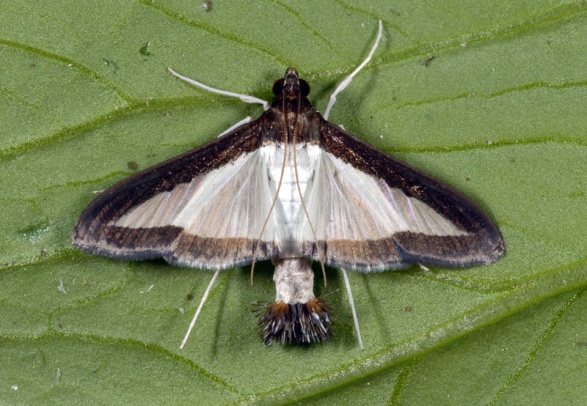
Melonworm
Diaphania hyalinata Linnaeus
(Insecta: Lepidoptera: Pyralidae)
Adults have a wingspan of 25 mm. Wings are semitransparent, iridescent white and bordered with a broad band of brown. The tip of the abdomen bears brushy hairs. Eggs are 0.7 mm long, oval, and turn from white or greenish to yellow. Larvae are pale yellow-green and grow from 1.5 mm to 15 mm in length. Pupae are brown, 12 to 15 mm long, and attached by a loose silken cocoon to a folded portion of the leaf.
The life cycle can be completed in 30 days. At night, females lay eggs in small clusters on stems, buds and the underside of leaves. Larvae hatch after three to four days and develop through five instars within 14 days. The pupal stage lasts nine to 10 days.
Diaphania hyalinata is a tropical species present throughout most of Central and South America and the Caribbean. It occurs year round in South Florida and disperses northward as far as New England in the summer.
Melonworm feeds exclusively on wild and cultivated cucurbits, especially on summer squash and winter squash.
Images
To
save the Web-optimized images shown below to your hard drive:
PC users: right click to "Save Picture (or Image) As..."
Mac users: click and drag to your desktop.

Adult moth of melonworm, Diaphania hyalinata Linnaeus
(Photographer: Lyle Buss, University of Florida)
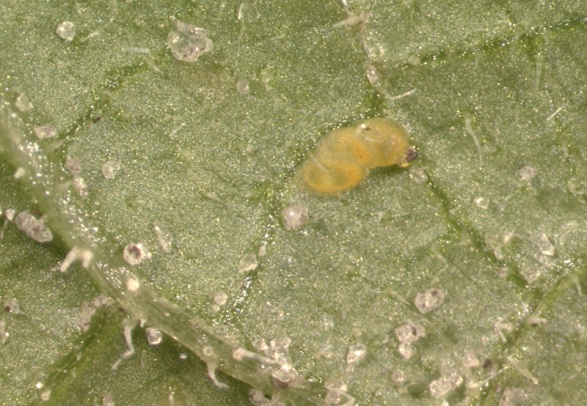
Eggs of melonworm, Diaphania hyalinata Linnaeus
(Photographer: Lyle Buss, University of Florida)
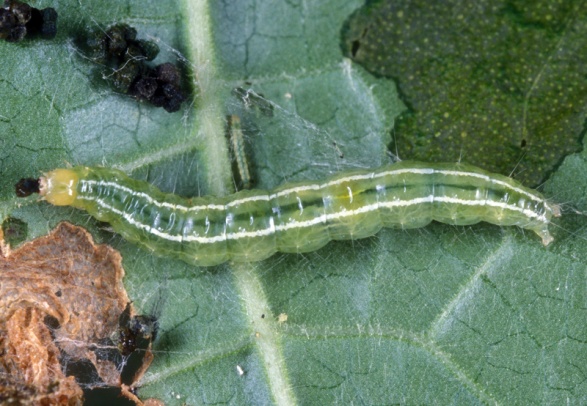
Early and late larval instars of melonworm, Diaphania hyalinata Linnaeus
(Photographer: Lyle Buss, University of Florida)
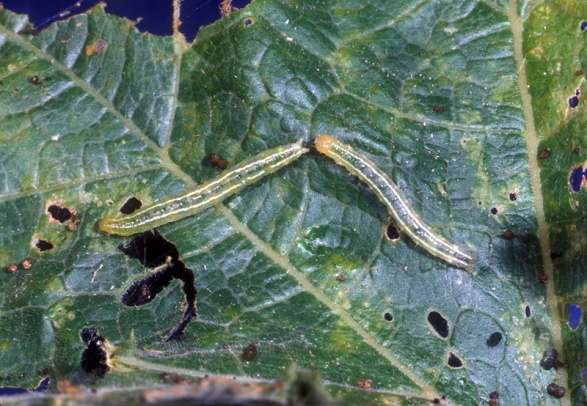
Larvae of melonworm, Diaphania hyalinata Linnaeus, feeding on squash leaves
(Photographer: Paul Choate, University of Florida)
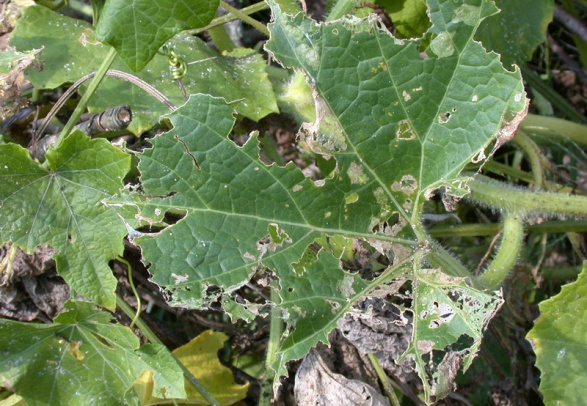
Squash leaves damaged by melonworm, Diaphania hyalinata Linnaeus
(Photographer: Lyle Buss, University of Florida)
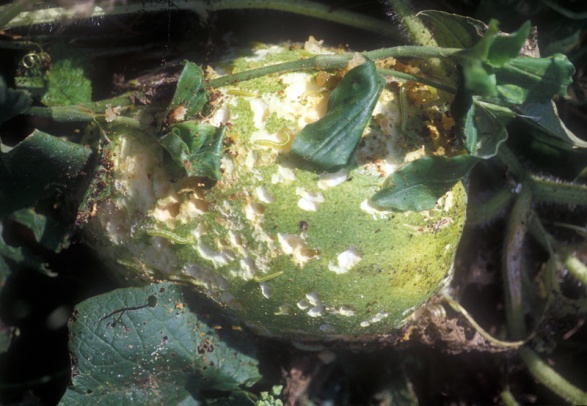
Melon fruit damaged by melonworm, Diaphania hyalinata Linnaeus
(Photographer: James Castner, University of Florida)